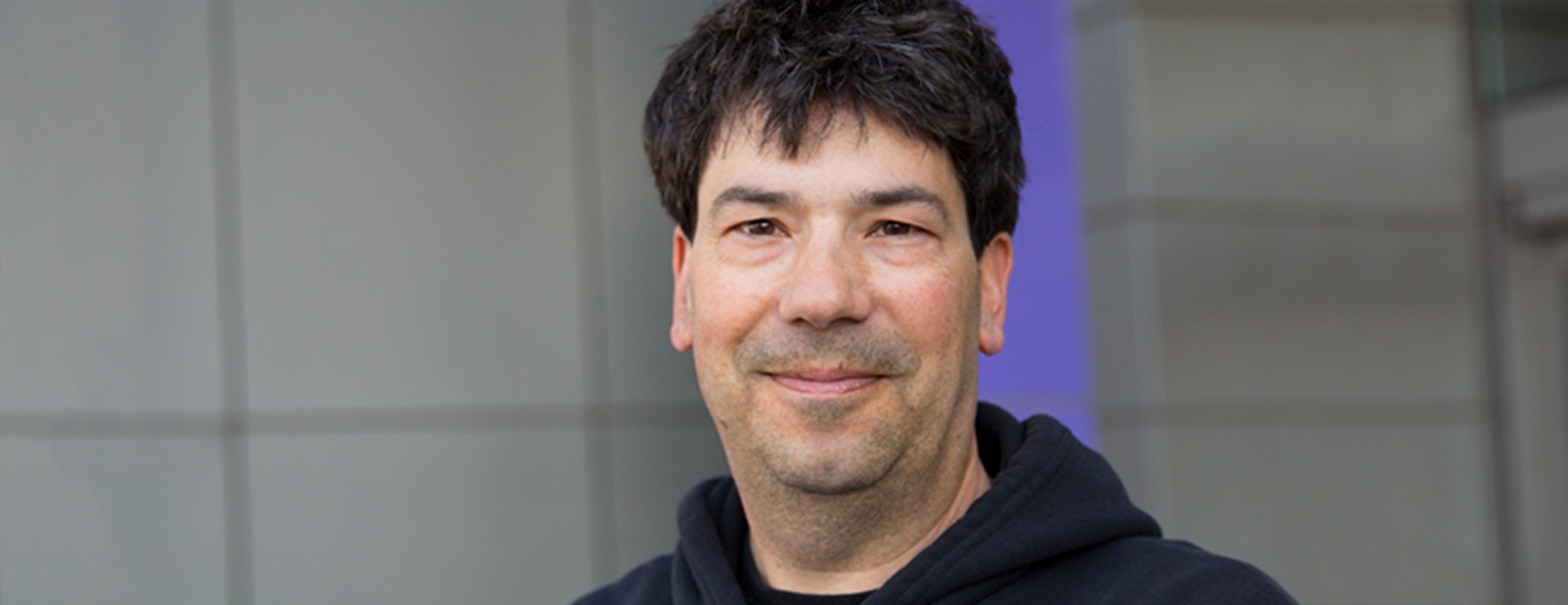Russell Tenofsky already had undergone two open-heart surgeries for his congenital heart disease by age 50. But when his pulmonary heart valve began to deteriorate critically, Tenofsky found himself facing the daunting prospect of another major operation that could pose serious health risks.

A Gentler Approach to Heart Valve Replacement
"The more frequently one has to open up the chest, the more scar tissue you get," says Dr. Elyse Foster, Tenofsky's cardiologist and director of Adult Congenital Heart Disease at UCSF. And built-up scar tissue from multiple surgeries can make future operations more difficult.
Fortunately, Tenofsky's doctors at UCSF found a less traumatic alternative to open heart surgery. He qualified for a "transcatheter" approach – a minimally invasive procedure that involves inserting a replacement valve through a vein.
Tenofsky was born with tetralogy of Fallot (TOF), a condition caused by a combination of four heart defects. Many people with TOF need surgery early in life and ongoing care to keep their hearts healthy.
In 1975, at age 8, Tenofsky underwent his first open-heart procedure at UCSF.
Doctors opened his chest again in 2009 to replace his pulmonary valve after a period of escalating symptoms like light-headedness and shortness of breath. The pulmonary valve is one of two that allow blood to leave the heart via the arteries.
"Over time, those replacement valves can deteriorate," Foster says. "The time is variable, but they last on average about 10 years."
When Tenofsky began having symptoms again in 2017, Foster wanted to explore alternatives to surgery. So she got in touch with Dr. Vaikom Mahadevan, a pioneer in the use of less invasive methods to treat adults with heart defects.
Mahadevan came to the UCSF Adult Congenital Heart Disease Clinic in 2014 from the Manchester Royal Infirmary in the United Kingdom and is one of the world's few cardiologists to have used catheter-based approaches to replace valves in all four positions in the heart – aortic, mitral, pulmonary and tricuspid. He also led the team that performed the first mitral valve replacement in a human using a catheter-based procedure.
"Essentially this is a big paradigm shift in the management of patients with valvular heart disease," Mahadevan says. "It is transformational in the sense that for patients who have had multiple previous surgeries, every surgery becomes higher risk and recovery becomes slower."
Mahadevan estimates that avoiding subsequent surgeries can buy heart patients as many as 25 extra years of life. Fortunately, the replacement valve from Tenofsky's 2009 surgery created a good landing zone for a new transcatheter pulmonic valve (TPV).
"Once you have a surgical valve, it's like valuable real estate inside it," Mahadevan says. "We thought he would be a good candidate for what they call a valve-in-valve transcatheter procedure."
During the procedure, a TPV made from a cow's heart tissue is sewn into a stent. Doctors then crimp the stent onto a balloon and insert it through an incision in the groin. The balloon is inflated, expanding the stent into the pulmonary wall. When the balloon deflates, the stent stays in place. In Tenofsky's case, the new valve was placed inside the one implanted during his previous surgery.
It takes doctors two to three hours to complete the procedure, which includes general anesthesia or light sedation. Unlike open-heart surgery, which can take several hours and requires hospitalization for about a week, patients who undergo TPV often go home the following day.
"I was a little sore and had some swelling and bruising that lasted about a month," says Tenofsky, who also had his cardioverter defibrillator replaced during the procedure because the battery was wearing down. The defibrillator, which his providers implanted about three months after the 2009 surgery, helps detect potentially life-threatening abnormal heart rhythms and restore a normal rhythm.
"I'm back to riding my bike trainer and doing all of the physical activities I did before my surgery," Tenofsky says. He went home one day after the procedure and was back to normal within weeks. "I had very few restrictions and am now fully recovered."
Adults with congenital heart disease benefit from ongoing care from specialized cardiac care centers such as the one at UCSF, Foster notes. Cardiologists who regularly treat patients with CHD have a much better understanding of the disease and potential complications – often leading to better outcomes, she says.
"The continuity of care I receive from (my medical team) is imperative to my health," says Tenofsky, who volunteers for the Adult Congenital Heart Association. "I literally owe my life to my doctors at UCSF."






